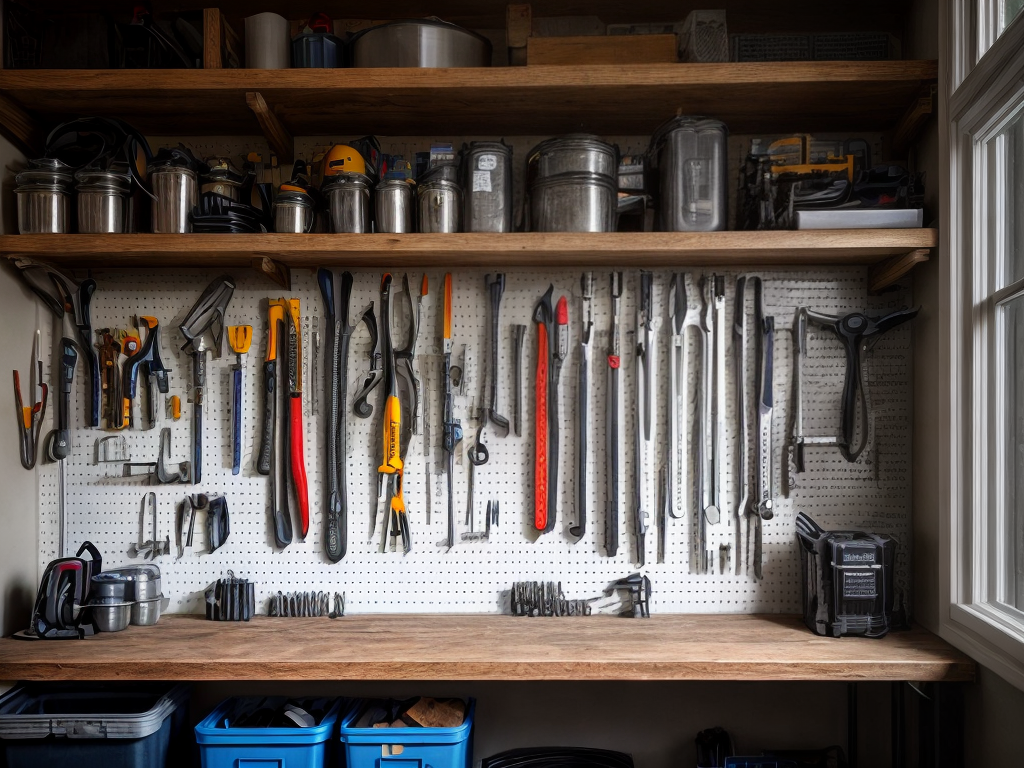
As I step into my home, I am struck by the stark contrast between the cozy comfort I feel and the ever-growing urgency to address environmental concerns. It is this very juxtaposition that has led me to embark on an eco-friendly home makeover, adopting a sustainable approach that not only aligns with my values but also helps reduce my environmental footprint. In this discussion, I will explore the various aspects of this sustainable transformation, from energy-efficient appliances to eco-friendly landscaping options, leaving you with a compelling reason to continue exploring the possibilities for a greener, more sustainable home.
Energy-Efficient Appliances
I highly recommend investing in energy-efficient appliances for your eco-friendly home makeover. Not only will these appliances help reduce your carbon footprint, but they can also save you money on your energy bills. One of the key features of energy-efficient appliances is their ability to incorporate smart home technology. With smart technology, you can control and monitor your appliances remotely, optimizing their energy usage and reducing waste.
Solar power is another important aspect to consider when choosing energy-efficient appliances. By harnessing the power of the sun, you can significantly reduce your reliance on traditional energy sources. Many energy-efficient appliances are designed to work seamlessly with solar power systems, allowing you to maximize your energy savings.
When shopping for energy-efficient appliances, look for the ENERGY STAR label. This certification ensures that the appliance meets strict energy efficiency guidelines set by the Environmental Protection Agency. ENERGY STAR appliances are designed to use less energy without sacrificing performance.
Sustainable Building Materials
When it comes to sustainable building materials, there are several options to consider. One option is to use natural alternatives for construction, such as bamboo or cork flooring, which are renewable and biodegradable. Another option is to use recycled building materials, such as reclaimed wood or recycled metal, which reduce the demand for new resources. Additionally, choosing energy-efficient insulation options, like cellulose or spray foam, can help reduce energy consumption and minimize environmental impact.
Natural Alternatives for Construction
Sustainable building materials offer a natural alternative for construction, promoting environmentally-friendly practices and reducing the carbon footprint of homes. When it comes to eco-friendly paint options, consider using low or zero VOC (volatile organic compounds) paints. These paints have fewer harmful chemicals and release fewer toxic emissions into the air, making them safer for both the environment and your health. Additionally, sustainable flooring choices can have a significant impact on the overall sustainability of your home. Opt for materials like bamboo, cork, or reclaimed wood, as they are renewable and have a lower environmental impact compared to traditional options. These natural alternatives not only contribute to a healthier living environment but also help to create a more sustainable future.
Recycled Building Materials
Using recycled building materials is a sustainable and cost-effective way to reduce waste and minimize the environmental impact of construction. By repurposing materials that would otherwise end up in landfills, we can help conserve natural resources and reduce energy consumption. Here are three key benefits of using recycled building materials:
- Environmental preservation: By choosing recycled materials, we can reduce the demand for new resources and minimize the need for energy-intensive manufacturing processes. This helps protect natural habitats and reduces greenhouse gas emissions.
- Cost savings: Recycled building materials are often more affordable than new ones, making them a budget-friendly choice for homeowners. Additionally, using recycled materials can potentially qualify for tax incentives and green building certifications.
- Unique aesthetics: Upcycled furniture and repurposed decor can add a touch of character and uniqueness to your home. These items often have a story to tell and can become conversation starters, adding a personal touch to your living space.
Energy-Efficient Insulation Options
I discovered an array of energy-efficient insulation options while researching sustainable building materials for my eco-friendly home makeover. One option is to install solar panels on the roof, which can generate electricity to power the home and reduce reliance on fossil fuels. These panels capture sunlight and convert it into usable energy, making them a cost-effective and environmentally friendly choice. Another option is geothermal heating, which utilizes the earth’s natural heat to warm the home. This system involves burying pipes underground to extract heat, which is then transferred to the home. Geothermal heating is highly efficient and can significantly reduce energy consumption. By incorporating these insulation options, I can create a more energy-efficient and sustainable home.
Water Conservation Strategies
Implementing effective water conservation strategies is essential for creating an eco-friendly home. Here are three key strategies to consider:
- Rainwater Harvesting: Collecting rainwater is a simple and efficient way to reduce water consumption. Install a rain barrel or a larger cistern to capture rainwater from your roof. This water can be used for irrigation, washing cars, or even flushing toilets, reducing the need for treated tap water.
- Low Flow Fixtures: By installing low flow fixtures such as aerated faucets, showerheads, and toilets, you can significantly reduce water usage without sacrificing performance. These fixtures are designed to maintain adequate water pressure while using less water, helping you conserve water and lower your water bills.
- Smart Irrigation Systems: Opt for smart irrigation systems that use technology to optimize water usage. These systems monitor weather conditions, soil moisture levels, and plant water requirements to deliver the right amount of water precisely when and where it is needed. This prevents overwatering and minimizes water waste, ensuring your landscape stays healthy while conserving water.
Indoor Air Quality Improvements
When it comes to improving indoor air quality, there are several key points to consider. First, filtering airborne pollutants is essential in removing harmful particles from the air we breathe. This can be achieved through the use of high-quality air filters or air purifiers. Secondly, natural ventilation solutions, such as opening windows or using exhaust fans, can help to circulate fresh air throughout the home. Lastly, opting for non-toxic cleaning products can significantly reduce the amount of harmful chemicals released into the air during cleaning tasks.
Filtering Airborne Pollutants
Improving indoor air quality can be achieved by effectively filtering airborne pollutants. There are several methods to achieve this, including the use of air purifiers and plant-based air filters. Here are three important points to consider when filtering airborne pollutants:
- Air purifiers: These devices are designed to remove contaminants from the air, such as dust, pollen, pet dander, and smoke. They work by pulling in air and passing it through filters that capture these particles, thus improving indoor air quality.
- Plant-based air filters: Certain plants, such as spider plants, snake plants, and peace lilies, have been found to naturally filter and purify the air. These plants absorb harmful chemicals and release oxygen, helping to create a healthier indoor environment.
- Regular maintenance: It is important to regularly clean and replace filters in air purifiers and plant-based air filters to ensure their effectiveness. This will help to remove accumulated pollutants and maintain good indoor air quality.
Natural Ventilation Solutions
To further enhance indoor air quality, another eco-friendly solution is to explore natural ventilation options. Sustainable cooling techniques and passive ventilation systems can help improve air circulation and reduce the need for artificial cooling methods, thus reducing energy consumption and environmental impact. By incorporating natural ventilation strategies into your home, you can ensure a constant flow of fresh air while maintaining a comfortable indoor temperature.
One effective natural ventilation solution is the use of operable windows and skylights, which allow for the controlled intake and release of air. Another option is the installation of louvers or vents in strategic locations to facilitate airflow. Additionally, utilizing architectural features such as atriums or courtyards can create a natural circulation of air.
By implementing these sustainable cooling techniques and passive ventilation systems, you can achieve better indoor air quality while reducing your carbon footprint. Consider incorporating these natural ventilation solutions into your eco-friendly home makeover for a healthier and more sustainable living environment.
| Natural Ventilation Solutions |
|---|
| Operable windows and skylights |
| Louvers or vents |
| Atriums or courtyards |
Non-Toxic Cleaning Products
Using non-toxic cleaning products is a crucial step in improving indoor air quality during an eco-friendly home makeover. When it comes to cleaning our homes, we often overlook the harmful chemicals present in conventional cleaning products. By switching to eco-friendly alternatives, we can create a healthier living environment for ourselves and our families. Here are three reasons why using non-toxic cleaning products is beneficial:
- Safer for your health: Conventional cleaning products often contain chemicals that can irritate the skin, eyes, and respiratory system. Opting for eco-friendly dish soap and homemade cleaning solutions reduces exposure to these harmful substances, protecting your health and well-being.
- Better for the environment: Traditional cleaning products contribute to water and air pollution due to their chemical ingredients. Eco-friendly alternatives, on the other hand, are biodegradable and less harmful to aquatic life and ecosystems.
- Cost-effective: Making your own cleaning solutions using simple ingredients like vinegar, baking soda, and lemon juice can help you save money in the long run. These homemade solutions are just as effective as store-bought products and are often more affordable.
Renewable Energy Solutions
Renewable energy solutions offer a sustainable and efficient way to power your eco-friendly home. By utilizing smart grids and solar panels, you can reduce your carbon footprint and save on energy costs.
Smart grids are advanced power systems that use digital technology to monitor and manage electricity supply and demand. They enable efficient distribution of electricity, reducing wastage and ensuring a reliable power supply. With a smart grid, you can optimize energy usage in your home and even sell excess energy back to the grid, contributing to a more sustainable energy ecosystem.
Solar panels, on the other hand, harness the power of the sun to generate electricity. They convert sunlight into usable energy, providing a clean and renewable source of power. Installing solar panels on your roof can significantly reduce your reliance on traditional energy sources and lower your electricity bills.
With these renewable energy solutions, you can power your eco-friendly home while making a positive impact on the environment.
Eco-Friendly Landscaping Options
With our renewable energy solutions in place, it’s time to explore eco-friendly landscaping options for your sustainable home. Creating a beautiful and environmentally-friendly landscape not only enhances the aesthetics of your property but also reduces water usage and supports local ecosystems. Here are three eco-friendly landscaping options to consider:
- Water Efficient Irrigation: Implementing a water-efficient irrigation system is crucial for conserving water. Drip irrigation and smart irrigation controllers are excellent choices. Drip irrigation delivers water directly to plant roots, minimizing waste through evaporation and runoff. Smart irrigation controllers use weather data and soil moisture sensors to adjust watering schedules, ensuring plants receive the right amount of water without overwatering.
- Native Plant Landscaping: Incorporating native plants into your landscape design offers numerous benefits. Native plants are adapted to the local climate and require less water, fertilizer, and maintenance. They also provide habitat for local wildlife, including pollinators like bees and butterflies. Additionally, native plants help prevent soil erosion and promote biodiversity.
- Mulching: Mulching is a simple and effective way to conserve water and improve soil health. Applying a layer of organic mulch around plants helps retain moisture, suppresses weed growth, and regulates soil temperature. Organic mulch options include wood chips, straw, shredded leaves, and compost.





